It’s exhilarating to start and run your own company, but it’s also difficult. Unexpected challenges will inevitably arise, even with the finest available coaching and preparedness. What matters is how you respond to the unexpected difficulty. In this interview series, we spoke with 20 business owners and CEOs from various companies in the United States on how they handled challenges during the Covid -19 Pandemic.
INTERVIEW HOST
The host of this interview was Jed Morley. Jed Morley is the CEO of a leading payment processing service provider called PlatPay.

Table of Contents
The question we asked:
The pandemic encouraged many businesses to pivot and adapt to changing market conditions. How did you adapt? Did you introduce additional product lines or services?
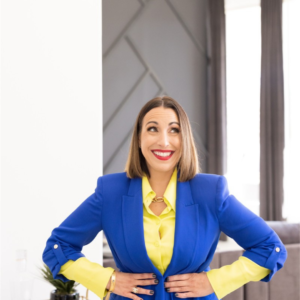
Renee Bauer
Tasks have a funny way of stealing your time. When you stop focusing on how to scale your business and only focus on tasks, the growth of your business halts abruptly. Make sure your schedule has plenty of time to work ON the business and not just IN the business.

Paige Arnof-Fenn
My biggest challenge was that the people you start with are not always the ones who grow with you. The hardest lesson I learned when I started my company is not getting rid of weak people earlier than I did in the first few years of my business. I spent more time managing them than finding new customers.
I knew in my gut they were not up to snuff but out of loyalty to them I let them hang around much longer than they should have. It would have been better for everyone to let them go as soon as the signs were there. They became more insecure and threatened as we grew which was not productive for the team.
As soon as I let them go the culture got stronger and the bar higher. “A” team people like to be surrounded by other stars. It is true that you should hire slowly and fire quickly. I did not make that mistake again later on so learned it well the first time. I wish I had known it even earlier though but lesson learned for sure! Another key challenge has been about the importance of focus.
There is so much noise out there with social media, 24/7 news, climate change, etc. that for my clients and me staying focused with all the distractions we are bombarded with on a daily basis can be tough. So my top tip is to learn to give yourself permission to say no.
Whether it means passing on joining another committee, delegating to someone on your team to attend the event, sleeping in (no to an alarm clock), meditating, taking a walk, or just turning off my phone and computer (no I will respond later on my own schedule), simple acts of letting myself focus, relax and be present in the moment are the very best gifts I can give myself as an entrepreneur.
Like most small business owners and entrepreneurs there are never enough hours in the day to fit everything in so when something has to give it is usually time I have allocated for myself to think, exercise, read or just relax. What I have come to appreciate and realize in my 50s is that “me time” is not a luxury or pampering like it was in my youth, now it is maintenance! To improve productivity in my experience when you focus and do less you can get more done.
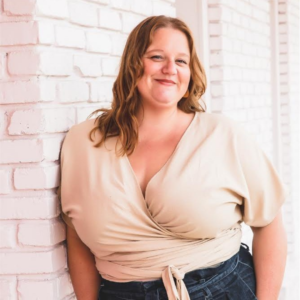
Emily Lawson
When growing a small business, things rarely go exactly as planned. Within the first few years of the company, we were still understanding the market we were in and figuring out how to produce consistent product. And then all at once, I lost three of my key team members (at that time we were more like a family), and the blow of their departure felt personal.
They all worked on the production of the product and were looking for other opportunities in life, which they all found within a month of each other. This left a gaping hole in the most important role in my company, the production of the product by hands that truly cared what they were producing and that I trusted beyond measure to produce our product. So, I adapted. I rehired and reworked our systems for an entirely new team, brought everything back to basics and got back into the kitchen. The result has put us where we are today.
It was a gift that they moved on and, in the end, we created a new system where people could thrive in their positions, and I made shifts that we didn’t even know we needed to make. These things happen often in growing a small business. All these common issues are things that we deal with and have learned to meet head on. I always have a plan B and have never wanted to give up.
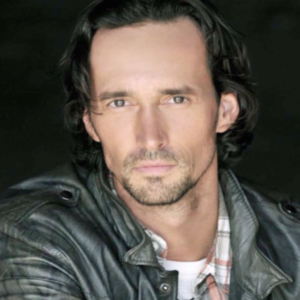
Gary Kohn
The greatest challenge will always be getting past your own self-created boundaries. No matter how head strong the entrepreneur, there will often be moments of self-doubt, uncertainty and moments where you want to run in the other direction.
The solution is to keep pushing forward, even if it’s just for a small amount of time daily. Over those months and eventually years, the hard work and resilience becomes cemented and helps you get past the times that are extremely challenging. The well-formed habit of working daily on your dreams is hard to break, and will get you through the biggest challenges.

Ewen Finser
Challenge:
Having a Robust Business Process Documentation If you think documentation has an insignificant role in your business, think again. It is one of the most critical parts that every entrepreneur should focus on, especially when kick-starting any venture.
The documentation process is the structural backbone of any business. Due to the divergent workflow of your business (especially going online, being in a remote work environment, or adopting a hybrid model), your internal operation may be prone to inconsistencies, confusion, and unproductive staff if proper documentation procedures are ignored.
Most especially, when someone tenured or knowledgeable in the team leaves, no one knows what’s going on or how to move forward because there’s no black-and-white procedure to guide everyone.
Also, you will undergo a constant trial and error phase in starting your business. Thus, it requires a robust document-centric process to define what works and what doesn’t.
How to Overcome it:
Prioritize Creating a Standard Operation Procedure (SOP) I know this is an arduous process and painful process. But writing and paying attention to your processes will allow you to map your business process and growth. A straightforward way is to write everything down while you do tasks (or you can record it through video). Outline every process from start to finish. This will allow you to streamline your process, make more informed decisions and reduce errors in the long run.
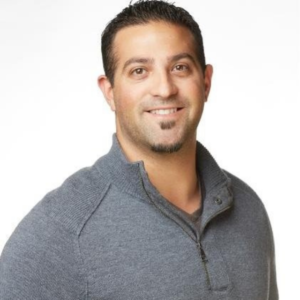
Ian Sells
There was a time when I was still managing my first Amazon brand, that I would launch a product and it would fly and get sold out within hours. The thing with eCommerce is that it grows very fast. In my first Amazon brand, I was astounded with how fast the sales were going.
This success has caused me to be impulsive and expand my brand too fast. I impulsively made the decision to launch a lot of products at once. The thing was, I didn’t have systems in place to keep up with the growth my hasty actions has caused. You may say that it is a good problem. But it would not be a problem if I only planned well and followed a gradual process.
I didn’t have the capital to keep up with the sudden surge of order volume nor the manpower to handle the influx of orders. Basically, I didn’t have systems in place and can’t keep up with the growth. At the time, I was a one-man company. Lesson learned: Scaling your brand sinvolves planning and preparation. Don’t scale just cause the market is good. Scale up when you have enough cash, have the capacity to leverage hard and have the systems in place.
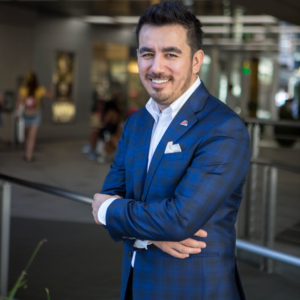
Sardor Umrdinov
I always associate my business with chess. Everything, like in chess, must be carefully considered from all angles before making a move. It’s impossible to predict every action with 100% certainty.
However, the beauty of this game is that it can be played by anyone because there are no predetermined goals or rules. I believe that if you always go with the flow, you will lose interest in being an entrepreneur. As a result, I enjoy taking risks because it keeps me on my toes and ready for any challenge that comes my way.
I took one of the biggest risks in 2016 for Home Alliance. I decided to design and develop our own software. We sought the help of Ukrainian developers because dealing with this process on our own would be impractical. We created our CRM system, and our profit margins increased by 15%.
However, by growing so fast, we couldn’t keep up. In 2017, the gross revenue growth slowed down. I didn’t make many projections. We had no process in place. It was me managing most of the things myself. There wasn’t enough coaching and accountability. We started becoming the limits to the growth of our organization.
When a company’s revenue reaches $10 million to $15 million, I’m sure it has a crisis. If you don’t adjust, the organization can die or get stuck. Then I learned to trust my people and let go of control. I started delegating and my team learned to delegate to their teams. This was our first step in developing accountability and structure. It’s more dependable. Rather than focusing on people, we’re focusing on roles and functions in the organization.
Every mistake is a chance to learn something new. When you fail, be kind to yourself. Analyzing yourself now will help you avoid repeating unpleasant situations in the future. Put your faith in your employees and team to take care of the most critical aspects of your business. Your company’s systems, corporate culture, and mission are the lifeblood of your company, and they will change regularly.
You will always maintain control and direct the direction in which the business grows based on how you handle these changes. I have learned to practice detachment as one of the most effective ways to manage change in my business and build trust with my employees.

Emily Martin
Too many tools…..as a first-time entrepreneur, I feel like it’s hard to decide what tools to use for which purpose. While I don’t know things about legal contracts and business operation, there are 15+ different platforms to decide to use for contracting and even then you don’t know what it means.
There are 15 different accounting tools but not all of them connect to the same banks. Also, there are HR management and payroll platforms but not for all types of employees.
It feels like when creating and growing your business you choose a tool that is good for now but then, it adds 10 other tools for other specific use cases. I wish there was just 1 tool – a business-use platform…. where accounting, payroll, contracts, etc. All were in 1 place. My advice is to find a founder with a similar business model to you and follow their tech stack and business setup.
Try to leverage other founders who have already done it and understood the benefits of the software they chose.

Alex Lefkowitz
I’m Alex from Tasty Edits, a video editing company for content creators. I founded Tasty Edits in 2020 as a solo entrepreneur, and bootstrapped it to a team of 10 that has become the best video editing service on Google (in terms of organic traffic.) My answer is about managing crises and what to do when they occur. ———- Being an entrepreneur is hard, especially if you’re a solo founder, because the onus of finding a solution when something goes wrong is solely on you.
When you’re starting your business, solving a crisis doesn’t seem like a big deal because you have very few processes in place, thus, only a limited number of things can go wrong at any given time. As you build your business, however, the number of potential crises increases commensurate with the number of processes you create and the complexity of your workflow / supply chain.
I made the mistake of thinking that once something is done — in other words, a system is built or a process is created — it’ll work perfectly in perpetuity. Unfortunately, that’s not the case. At one point in late 2021 I found myself overwhelmed by multiple crises occurring all at once, causing me an insane amount of stress, needing to work non-stop for weeks straight, and ultimately questioning if I should give up on the business.
To make a long story short, I spent several weeks building a video order workflow and quality assurance system. The goal of which was to make sure we’re producing the highest quality edits to reduce churn. Shortly afterwards, I started working on building our own custom project management software, dubbed our Video Order Management Application or “VOMA”, for short.
Everything was advancing about as well as I could have expected until, simply put, it wasn’t. Seemingly all at once, several of our editors suffered personal emergencies, our quality assurance workflow brokedown resulting in angry clients, and software compatibility issues wreaked havoc on VOMA. Handling the stress of it all at once was too much to bear, and I vividly recall leaning against the shower wall with warm water running down my face thinking, “maybe I should quit.”
Luckily I didn’t. Through sheer perseverance I put my nose to the grindstone and worked non-stop for weeks until everything was resolved. Everything turned out ok in the end, but it was honestly very traumatic. My advice to new entrepreneurs who want to avoid a similar situation is to be prepared before things go wrong. In other words, actively expect that things will break (even if they’re working perfectly right now) and put a plan in place to fix them if they do.
That might mean setting up an alternative workflow system that you can easily switch to if your current one breaks, or having employees on call in case you need them. Another tip is to not build too fast, especially if you’re a solo founder. You’ll find that most problems present themselves within a week or two, so wait for them to pop up before starting the next item on your roadmap. Alternatively, find a cofounder who can help you shoulder the burden when something goes wrong.
Lastly, I’ll say that money can solve many of the problems you’ll face when something goes wrong, so consider searching for angel investors or pitching VCs. Tasty Edits is, for better or for worse, fully bootstrapped so this was never an option for me — you need to have the money ready before crises occur. In other words, don’t search for an umbrella during a tempest.

Michaela Vybohova
When I was starting my brand I had an idea how the industry works seeing it from the other side working as a model for other designers but boy was I wrong.
The greatest challenge I’ve had is how to get established and find distribution without a budget, i bootstrapped my business without any funding, I think that’s were most people struggle and are scared to even start a brand of their own.
Best way to overcome it is to start small, meaning that don’t go into major production ordering thousands of units and then sit on inventory.
If you are new, take baby steps, don’t do something that will bankrupt you if it doesn’t work out, ideally invest maximum 30% of your savings at the begging and whatever your returns are, invest it back into the company, it will take time but there’s a room for everyone and I believe you can make it if you play it smart.

Cody Miles
No one ever said running a business would be easy. As an entrepreneur, you’re always being surprised with new and unexpected challenges, what determines your success is how you handle them.
I started Ashore, an online proofing and approval software, with one goal: to make collaboration accessible to everyone. Today, our app is used by creatives worldwide, including the creative teams at Disney, Adidas, Uber, and Coca-Cola, but it took a lot of work to get to this point.
The biggest challenge we faced, hands-down, was funding. We bootstrapped Ashore, and without big investors, we had to rely entirely on our product to bring in capital. We couldn’t afford much. So, instead of employing massive marketing efforts, we focused on building relationships, and instead of hiring professionals with years of experience, we found people with hidden talent.
Eventually, we were able to overcome this challenge. To start, we focused on our sales and development velocity, as the amount of time it takes to gain a customer or to develop new features is a huge determinant of your trajectory. This helped us keep money coming in the door, which was vital to our long-term efforts.
For other companies facing funding challenges, I’d recommend doing the same. Focus on your sales and development velocity, make sure you have money coming in, and don’t lose sight of your long-term goals.
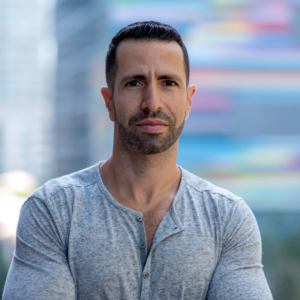
Rany Burstein
Our biggest early-on problem was a technical one. We started Diggz, our roommate finder web app, with a MVP version that worked great and quite fast. As we grew and acquired more users, our app slowed down and the user experience was quite bad.
At one point, our roommate search section took longer than 10 seconds to load. Our MVP wasn’t built for scale and we didn’t plan for it initially. To solve this problem, we sought guidance from several technical growth experts (who actually helped us voluntarily).
They advised us about what technologies to implement to speed things up and how to redesign our algorithm and database to work in a more efficient manner. We implemented multiple of the proposed solutions and that got our roommate search to load in less than two seconds. Major improvement.
This problem challenged us not to think only on how to make our app work today, but build it for scale and for continued growth. This lesson had an impact on any new feature we released since and we continueosly work to improve our user experience even when it seems it works well at the present.
While you don’t want to spend time and money building the perfect platform or app with all the bells and features from day one. You still want to keep your eyes on the road ahead, and not end up paying for “technical debt” later. Build things simple, but make sure you have a plan for scale, whether it’s your code, infrastructure or even team.

Mark Aselstine
Without a doubt, it’s government regulation and enforcement, especially when both of those things change consistently!
When we opened our wine club, we saw a number of court cases moving through the system, all of which seemed to suggest that more states would be open to more types of shipping of alcohol. That happened, but only for wineries and not for retail.
How can you overcome it? While government regulation is always going to change, especially after elections, there are almost always work arounds. Even in alcohol sales, which we’ve been arguing about in this country for over a century now, there are work arounds.

Sam Cohen
The biggest challenge I faced in recent years was finding suitable candidates for vacant positions after the Great Resignation. A lot of employees quit their jobs which left me in dire need to hire new people.
However, it was not as easy as I thought it would be. The applicants that were applying didn’t have the experience or the skills to fill in the role. So, I took a different route after constant failure to find what I had been looking for in potential hires.
I automated my accounts by using bookkeeping software’s like Zoho and QuickBooks. It took some burden off my shoulders, as I wasn’t manually doing the finances on my own. Therefore, I advise every young entrepreneur to automate any process they believe is demanding too much of their time and energy. This helps you to focus on what’s more important in the growth and stability of your business.

Michael Dean
The most unexpected challenge of running a business was how much goes into maintaining an online presence. If you are a business leader and you are not investing in your online presence, then you are missing out on endless opportunities for growth and longevity.
Consumers are spending more time on their devices than ever, so optimizing your business’ website and marketing for the digital landscape is crucial. When I first started my business, I underestimated the importance of social media and SEO, but now it is a top priority, as those are two major factors in securing my business’ audience and brand.
Having a good online presence includes unique social media content, an accessible website and consistent communication with your audience. All of these factors have the ability to set your business apart from your competitors, but it is up to you to invest the time and money.

Regan Ervin
Snippet:
I started my business on an ethical premise. The problem was that I needed excellent, agency-caliber storytelling to develop the concept and make it viable, yet I’d left behind my job to do the right thing (a financially risky choice). My now-partner and I began an unconventional creative partnership to help me accomplish all this, and it worked out for us.
Detailed Story:
Three years ago I started Capital E Advisors, a wealth management firm in the Kansas City area. Leaving an established firm to start my own business was a Jerry-McGuire-kind-of-moment for me. I had quit my job because I believed a large swath of the financial services industry had gotten some fundamental things wrong, and I was embarking to get it right.
I had a big vision, and knew the unique advantages I planned to offer our potential clients were compelling ones. The challenge I faced was communicating my business’ messages in a simple, effective way—and doing so without hiring a big agency with an even bigger price tag.
The answer to my problem was simple, strategic storytelling. I formed a partnership with a local creative director, Stephanie Klein, who used a combination of her academic background in fiction-writing and the StoryBrand marketing method to tell my story. Eight months after launching the new brand, we’ve been able to gain 250+ followers on both LinkedIn and Facebook, 100+ on Instagram, and high-relevance engagement on our Twitter.
We’re also very pleased with our client acquisition rate since then. Attached to this email is a simple case study with audience data and financial results included.
We credit our success to four distinct solutions. The first solution was a brand messaging guide with story-driven messages. The second solution was implementing those meaningfully and strategically. We implemented these messages on a new website, social channels, and a short video series. Implementing our guide also included a visual rebrand to match the messages we’d written.
The third solution —which powered the first two—was an unconventional, small-business-to-small-business partnership. Solution four was simple, but can’t be overlooked. We had a business model that was worth taking a bet on.
Solution Number One: Our Brand Messaging Guide
The brand messaging document was intended to make sure our marketing copy was purposeful and succinct (and it’s done just that). Creating powerful messages required a deep dive into the brand’s history and motives. Stephanie was emphatic that we were thorough with this part, reminding us that the story has to be deeply true for story-centric marketing to work.
We spent several days in interviews, ending the research with beers at a local brewery. Stephanie recorded the conversations, journalist-style, just like she had been doing all week. During that conversation, the four of us who were involved in the interviews collectively hit the answer we’d been looking for. A couple weeks later, she called me, saying she’d finished the first draft. It needed more work, as she’d indicated it would, but the feeling I got even at that early stage was that we were
telling our client’s story. And, by extension, our own.
The above order of the characters in our story is particularly significant. We know now that the most captivating stories for customers place them in the main characters’ role and help them imagine a successful journey with a brand. We found it to be crucial that potential consumers see one of our messages and feel immediately seen. This messaging step set us up well because we had a central checkpoint for our marketing strategy, something to make sure whatever we were writing aligned in all the ways we decided were important at the onset.
Solution Number Two: Implementing the Messages
We took on a massive amount of work to implement our messages. Maybe even more than we needed to. But it ended up being more fun than tedious. We built a website with the help of a local developer, spent a couple of days shooting the videos (and many weeks editing them). Once the brand was ready, we established social media objectives and channels to meet those objectives. The process took months, with a launch date almost a year later.
Stephanie shares her perspective of this stage here:
One of the coolest moments we had was after the brand was launched and we started running a social paid campaign. We’d been pretty thorough in our audience research, and we noticed that there were some big gaps in the potential audience and the current audience being targeted by other firms.
- We identified that millennial men of all ethnic and racial backgrounds, and women 35 and up, would be interested in the transparent promises of our brand, and we believed that there was data out there that proved this interest would turn into leads.
- After we launched the first brand awareness campaign, our click spend was incredibly low—and we discovered that 60 percent of our audience was women in the targeted age bracket.
- Finally, we noticed that the men who engaged with us were from a far more diverse age and race demographic than other firms were experiencing.
Solution Number Three: Building a Partnership
Like most new business owners, I needed to find a way to market my business without adding more financial risk than was fiscally prudent. A partnership was the solution, and we both had to take risks
to form one.
As I mentioned earlier, my big vision was difficult to convey. I was inspired, but I needed help captivating and inspiring others. I’m merely an entrepreneur with an idea, and I needed a creative with vision of her own to take this idea and mold it into a tale that can have an impact.
Finding the partner I needed required me to take a risk. Agency costs for the kind of project we completed are intended for corporations, and even small-scale collaborations with creative consultants (like the one I opted for with Stephanie) can eat profits in those early days. In my case though, the story and the business were so dependent on each other that I couldn’t see myself waiting to work on the brand.
I haven’t heard of a financial firm with a creative partner before, but doing it this way meant both of us could experience exceptional results. We feel great about the success we’ve found in this joint venture.
Stephanie’s perspective:
When we started negotiating, we chose to be transparent about our mutual business goals. If we hadn’t started this way, I don’t know if it would have worked in the long run. We ended up reaching an agreement that included profit-based compensation for me, and ownership of certain business assets at a second growth stage. It was a risk for both of us. There was risk for me because there was a lot of commitment involved up front, and for Regan, he was giving up a significant share of future earnings if we were successful.
I think the reason why this arrangement worked is because we both really believed in this idea. Regan was willing to take me on based on my passion for his story. He chose to overlook the fact that my corporate acumen was different than partners he may have envisioned having when he made the leap—he was a former COO at a successful investment firm; I was a former English instructor finishing an MFA degree.
When we met, I was wearing a teacher’s blouse and cardigan, and probably came off as a little reserved. I was definitely the unconventional choice, and it would have been easy to dismiss me as “not a good fit”. But he prioritized risk differently, and we’ve both benefited from it.
Solution Number Four: A Business Idea Worth Betting On
When I launched Capital E, I had a big vision to genuinely help clients simplify their financial lives without sacrificing investment quality. I believed there was a better way to serve clients and I was eager to put this into practice. Under a standard fee structure, I aimed to deliver a robust, holistic client experience inclusive of estate planning, tax preparation, financial planning and unique investment management that prioritized value-added activities.
I knew how improved the results would be compared to traditional RIA outcomes, even from good firms. Stephanie had to have her own discovery of my idea. Her’s came from an outside perspective of what I was offering (one that was more similar to what my clients might have). But the important part was that, looking at it from either end of the idea, the business was a solid concept.
Stephanie’s take:
One of the things I like best about telling stories is this possibility on the horizon that I might discover someone with a really great story. I didn’t know when I met Regan that I’d get that feeling of epiphany. But during our early days of what we marketing professionals call “brand discovery”, I started to realize he had that indescribable thing I am always hoping to find when I met with a new client.
We connected over the logic (and yes, it was logic) of why he’d quit his incredible c-suite job at a respected firm to rally a small slew of clients under a different premise. As Regan described to me the systemic problem he noticed —across the investment industry—I realized he was pitching something brave. Smart. And in an industry nearly void of empathy—his whole idea was particularly empathetic.
In the investing industry, most clients hire their advisor to manage their money. Therefore, the advisor needs these clients to believe they are good investment managers. But studies repeatedly indicate the vast majority of investment managers underperform their benchmarks. Regan had data to show how he’d corrected this aspect, but the corrections he’d made for investment performance were only part of his overall plan.
He explained that the over-focus on investment decisions distracts from the aspects of wealth management in which advisors have a greater impact on their clients’ well-being. Regan reprioritizes the allocation of resources to those items he can control.
Truly knowing each client as a person allows him to identify the matters that are a source of financial anxiety and complication. Consulting with clients on financial matters that are important to them, keeping clients organized and on task, helping clients optimize their financial decision making, facilitating the completion of estate planning and tax preparation by professionals –these are the things an advisor can do to add value. After all, isn’t the experience of wealth the whole point?
This realization was my moment of epiphany. I thought of luxury brands I’d worked on and how honesty and adding holistic value was high on the “needs” list of Regan’s high-net-worth client demographic. I also thought of big brands who successfully told their disruptor stories and changed their industries.
For me as a storyteller, a disruptive brand with a big heart is one heck of an exciting find, especially since I could also see how the business could scale. The story and the scaleability combined gave me the courage to jump in with both feet.
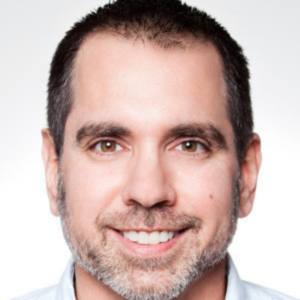
John DiBella
The greatest challenge that my business has ever faced and had to overcome was the sudden demand for our services when the pandemic hurt. All of a sudden, everyone was working from home, launching their own online businesses, and looking for any edge that they could utilize to increase their profit margins.
And it felt like they all decided at exactly the same time that the one thing they really needed if they were going to be the best at what they were doing was SEO optimization. The sudden influx of business meant that we went from working eight-hour days to twelve-hour days, and we’re still locked into the same pattern, and it doesn’t look like anything is going to change anytime soon.
The greatest challenge my business ever faced is the one that it’s still facing, and that’s the incredibly enviable position of having more work than we can comfortably handle. It is a challenge, but someone has to rise to face it head-on, and that someone may as well be me.
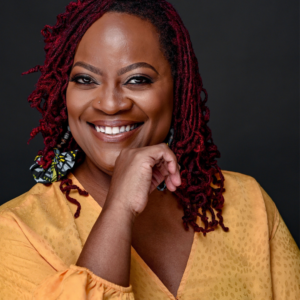
Tequila Cousar
The greatest and unexpected challenge that I have come against as entrepreneur in business was creating content on a consistent basis that converts. Warming: in the beginning you will be fired up and may be finding customers or clients, but you need to create a long-term strategy for growth.
The best thing you can do now is to start creating content that converts. How? There are 3 fundamentals of creating content that converts into 1-3 clients.
The 3 keys are: results, pain points, and invitation to work with you. It really is that simple. You want to highlight the results in the headline of your content. Touch on the pain point of what they may be struggling with to receive results. Invite them to engage on your post or reach out to you.
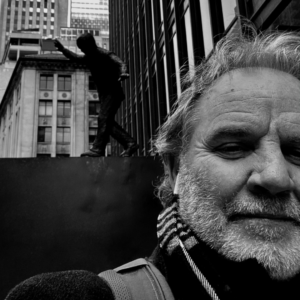
Jim Rennert
There are so many challenges when you go to work for yourself. First and foremost, as an artist, you not only have to create the work, but you also have to find those who are interested enough to purchase it.
While most artists can create, not all artists can sell. And without sales, you can’t continue to create the work. So it’s important to find a gallery and build a loyal collector base so you have those consistent sales to continue creating more work.
In addition to that, the financial aspect is huge for most artists and was a challenge when I wanted to become an artist full time.
Typically, when a piece of artwork is sold, there are three people that get paid – the gallery that makes the sale, the foundry that produced it, and the artist that created it. Back in those days, the breakdown of payment was 1/3 for each of these people. Now, if a piece of my work sold for $3,000, the gallery would make $1,000, the foundry would make $1,000 and I would make $1,000.
The problem was, I then had to pay the foundry another $1,000 to make the next piece, so I couldn’t figure out how I was supposed to make any money. So, I had a decision to make. I could either open a gallery to receive 2/3 of that payment, or I could learn the casting process and receive 2/3 of the payment.
When opening up a gallery, you need a brick and mortar, a lease, employees and other aspects I didn’t want to take on. I’m a worker, and have always been a worker, so I knew I would be able to figure out the casting process. And that’s what I did. Learning the process allowed me to create my own work, have the independence to cast it myself and make my money go twice as far. To this day I still cast my own work and haven’t looked back.
My advice to everyone is to believe in yourself and keep going. It can be tough at times, but if it’s something you truly enjoy, go for it. And most importantly, don’t let those who can’t do what you can do determine your future.

Howard Birnbaum
Uncertainty is one of the biggest challenges that my business faced during the pandemic. Uncertainty in business can arise at any time, sometimes because of the global debt or sometimes due to the economic crisis. Due to uncertainty, many businesses tend to shy away from long-term planning and so did I.
A failure to plan your next 5-10 years can destroy the value of your business. Always plan for more reactive long term policies.


